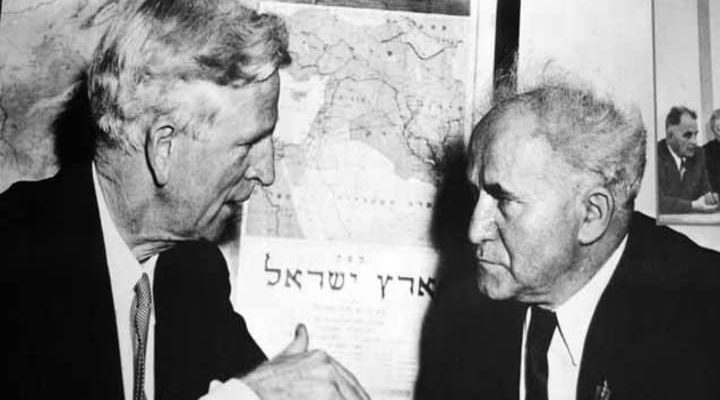James G. McDonald, who helped save thousands of Jews during the Holocaust, was excluded from the “Americans and the Holocaust” exhibit in Washington, possibly because the information contradicts the museum’s position on FDR.
By World Israel News Staff
The United States Holocaust Memorial Museum has broken its promise to the family of an American diplomat who helped rescue 2,000 Jews that he would be “featured” in its new exhibit, the David S. Wyman Institute for Holocaust Studies has announced.
The Wyman Institute released the text of a letter that was sent from U.S. Holocaust Museum director Sara Bloomfield, dated March 24, 2014, to Dr. Barbara McDonald Stewart, who was the daughter of the late James G. McDonald.
In the letter, Bloomfield promised Dr. Stewart that since “your father’s story is crucially important,” the Museum “will feature him in our upcoming exhibition on Americans and the Holocaust.”
However, the Wyman Institute said, McDonald has been completely omitted from the “Americans and the Holocaust” exhibit, which opened at the Museum in April 2018.
McDonald served as League of Nations High Commission for Refugees Coming from Germany (1933-1935) and chairman of the President’s Advisory Committee on Political Refugees (1938-1945). He fought with the Roosevelt administration to obtain visas for refugees and repeatedly criticized the administration for “paying only lip service” to the plight of the Jews.
McDonald charged in 1944 that the U.S. and its allies, in their policies toward Jewish refugees, were “guilty of face-saving maneuvers while millions of innocent men and women have been needlessly sacrificed.”
“It is deeply troubling that the U.S. Holocaust Museum has broken its explicit promise to the McDonald family to ‘feature’ him in its new exhibit,” Dr. Rafael Medoff, director of the Wyman Institute, stated.
“The claim by curator Daniel Greene (in Ha’aretz, Jan. 6, 2019) that ‘there was not enough room’ to mention McDonald is simply not plausible,” he said. “In a 5,000-square foot exhibit, surely there was room for at least a few words about a man who—according to the Holocaust Museum itself—helped save at least 2,000 Jews from the Holocaust. The museum should correct its grievous omission.”
‘Information contradicts’ museum’s position
Medoff told World Israel News that the museum’s decision to bury the McDonald story may be connected to recent research concerning Roosevelt’s treatment of McDonald.
“In recent years, historians have revealed that FDR repeatedly broke his promises to McDonald to help refugees–and that McDonald became an outspoken critic of the Roosevelt administration’s refugee policy in 1943-1944,” Medoff said.
“That information contradicts the new position that the U.S. Holocaust Museum has adopted in recent years, according to which they claim that there was little FDR could have done to help the Jews because of war conditions and anti-Semitism.
“Now that the McDonald story reflects badly on President Roosevelt, it conflicts with the Museum’s position. That may explain why the Museum has decided to omit McDonald from their exhibit, instead of ‘featuring’ him, as the museum’s director had promised the McDonald family.”
McDonald’s story is told in the critically acclaimed documentary, “A Voice Among the Silent: The Legacy of James G. McDonald,” by Shuli Eshel. In the film, Prof. Richard Breitman of the U.S. Holocaust Museum says, “McDonald actually helped save many thousands of lives.”
The full text of Sara Bloomfield’s letter may be viewed at: https://wymaninstitute.org/wp-content/uploads/2019/01/Bloomfield-letter-to-Barbara.pdf





